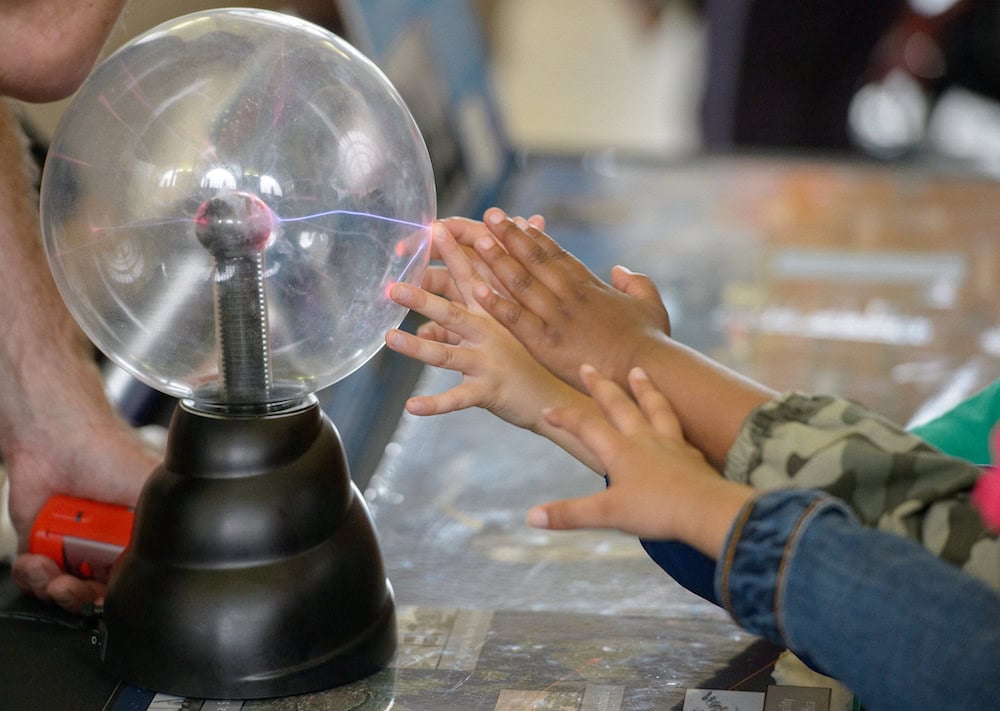
[Image above] Plasma is one of the classical states of matter. But more exotic states exist as well—such as the two electronic states discussed in recent papers. Credit: NASA HQ PHOTO, Flickr (CC BY-NC-ND 2.0)
It’s not every day you hear someone claim discovery of a new state of matter. And it’s even more surprising when two different universities make that claim within a week of each other. But that’s exactly what happened last month when both the University of Pittsburgh and Northeastern University published press releases announcing two completely different studies that each claimed to have discovered a new electronic state of matter.
University of Pittsburgh: The proof is in the Pascal
University of Pittsburgh researchers, in collaboration with colleagues from the University of Wisconsin-Madison and Carnegie Mellon University, made their finding when performing measurements of electrons in 1D conducting systems. In such systems, electrons do not scatter, as normally happens during conduction in semiconductors or metals.
In their study, the researchers found that not only do electrons not scatter, but they can attract each other and form “bunches of two, three, four, and five electrons that literally behave like new types of particles, new forms of electronic matter,” Jeremy Levy, senior author and distinguished professor of condensed matter physics at the University of Pittsburgh, says in a Pitt press release.
The researchers realized what was happening because of a subtle clue—they recognized their conductance data matched a sequence within Pascal’s Triangle (a number pattern consisting of binomial coefficients in a triangular array).
In 1D conducting systems, changes in conduction occur as discrete “steps” (change by integer multiples). For semiconductors, these quantum conductance steps typically follow a linear sequence that, in an applied magnetic field, resolve into steps of (1, 2, 3, 4, …) ⋅ e2/h.
However, the researchers found that for certain values of magnetic field, the conductance steps in lanthanum aluminate–strontium titanate (LaAlO3/SrTiO3) follow the sequence (1, 3, 6, 10, …) ⋅ e2/h instead, which is proportional to one of the diagonals in Pascal’s triangle.

Pascal triangle representation of observed conductance steps, represented in units of e2/h. The circled diagonal represents the sequence for an electron waveguide with two transverse degrees of freedom. Credit: ACerS
“The discovery took us some time to understand, but it was because we initially did not realize we were looking at particles made up of one electron, two electrons, three electrons, and so forth,” Levy says in the press release. “If you combine all this together, you get the sequence of 1, 3, 6, 10.”
Levy adds that the new “particles” feature properties related to quantum entanglement, which can potentially be used for quantum computing and quantum redistribution.
The paper, published in Science, is “Pascal conductance series in ballistic one-dimensional LaAlO3/SrTiO3 channels” (DOI: 10.1126/science.aat6467).
Northeastern University: No need for low temps when patterns form at room temp
The Northeastern University researchers also found electrons acting in an unusual way while observing the interface between two 2D materials, bismuth selenide and a transition metal dichalcogenide. Electrons should repel one another (because they’re negatively charged), but the researchers found the electrons formed a stationary, crystalline pattern instead.
“At certain angles, these materials seem to form a way to share their electrons that ends up forming this geometrically periodic third lattice,” Swastik Kar, associate professor of physics at Northeastern University, says in a Northeastern press release. “A perfectly repeatable array of pure electronic puddles that resides between the two layers … I’m tempted to say it’s almost like a new phase of matter.”
In the press release, Kar explains they originally thought the result was a mistake. Previous work had shown similar phenomena at extremely low temperatures, but they were observing the materials at room temperature. However, after repeated testing and experiments, they kept getting the same result and decided the results were true.
But what caused the electrons to behave this way? As Kar and his team performed the experimental investigations, Northeastern distinguished professor of physics Arun Bansil and doctoral student Christopher Lane examined theoretical possibilities driving the phenomenon.
In the press release, Bansil explains their reasoning. “[The layout of positive and negative charges in the materials] produce these regions where there are, if you like, ditches of some kind in the potential landscape, which are enough to force these electrons to create these puddles of charge,” Bansil says. “The only reason electrons will form into puddles is because there’s a potential hole there.”
Although there is still much to learn about this phenomenon, the researchers are excited at the potential it has to impact electronics in the future. “The excitement at this point is in being able to potentially demonstrate something that people have never thought could exist at room temperature before,” Kar says. “And now, the sky’s the limit in terms of how we can harness it.”
The paper, published in Nanoscale, is “Evidence of a purely electronic two-dimensional lattice at the interface of TMD/Bi2Se3 heterostructures” (DOI: 10.1039/C9NR04412D).
Author
Lisa McDonald
CTT Categories
- Basic Science
- Electronics
- Nanomaterials


